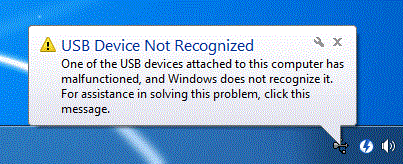
There could be many factors that can lead to this issue, such as:
- Corrupt or unstable USB driver
- Windows is missing important updates
- USB controllers may have become unstable or corrupt
- Corrupt USB drive or partition
However, you can still fix the issue and extract the files from the USB drive with the help of the solutions provided in this post. In the worst-case scenario, you may have to format the drive to make it usable again and lose the data that was on the USB drive to circumvent the device not recognized error. Therefore, we have also mentioned how you can recover your data from a formatted, damaged, corrupt, and inaccessible hard drives.
Solution 1: Restart
A simple reboot can fix a lot of issues including the “USB Device not recognized” issue. Unplug your USB drive, shut down the system, and then remove the power cord from the power supply as the modern systems don’t go off completely and the motherboard still gets power.
Then connect the power supply, boot the system, and plug in your USB drive. Check if it’s recognized and you are able to access the drive via File Explorer.
Solution 2: Try Different PC
Try connecting your USB drive to a different PC. If the drive doesn’t work on the second PC, the USB drive could be damaged or corrupt. You can try to repair USB drive by formatting but that’ll lead to data loss. Read on to know how to handle data loss situation in such case.
Solution 3. Re-Install USB Drivers
Corrupt or unstable USB drivers can sometimes cause severe problems. The current issue you are facing could be a problem with the USB drive drivers. You can fix this by re-installing the USB drive drivers using Device Manager. Follow these steps to fix the issue:
- Press ‘Windows+S’ and type Device Manager.
- Click on ‘Device Manager’ from the results.
- Double-click on Universal Serial Bus controllers. Then right-click on the USB drivers and select Uninstall. You can do this for all other listed USB drivers.
- After uninstallation, restart your system. The drivers are automatically installed by Windows and this possibly fixes the USB drive not recognized the problem.
Solution 4: Unplug all connected USB devices
Sometimes too many connected USB devices on the same machine create conflict that can stop other USB devices from functioning.
You can simply unplug all connected USB devices and then connect the USB drive to check if that solves the issue and you are able to access the files.
Solution 5. Fixing USB Root Hub
- Open Device Manager and double-click the “Universal Serial Bus controllers” option.
- Right-click on USB Root Hub and select Properties.
- Click Power Management tab and uncheck ‘Allow the computer to turn off this device to save power’ option. Then click ‘OK’ to save changes.
Restart the system and plug in the UBS drive to check if you are able to access the drive via File Explorer.
Solution 6. Using a Software Tool
If the above-mentioned solutions didn’t work for you, you can rely on a safe, reliable, and secure data recovery software—such as Stellar Data Recovery- Standard—that helps you recover data from such a USB drive that is not recognized by the system.
The Stellar Data Recovery- Standard for Windows recovers data from a corrupt, logically damaged, formatted, and even from a re-formatted USB drive. Follow these steps to recover data from your USB drive that is not recognizable and fix the drive after recovery:
- Download and install the Stellar Data Recovery- Standard on your PC.

- Plug in the USB drive and launch the program.
- Select what data you want to recover – office documents, files, folders, audio, pictures, videos, etc. You may click ‘All Data’ to recover all file types.
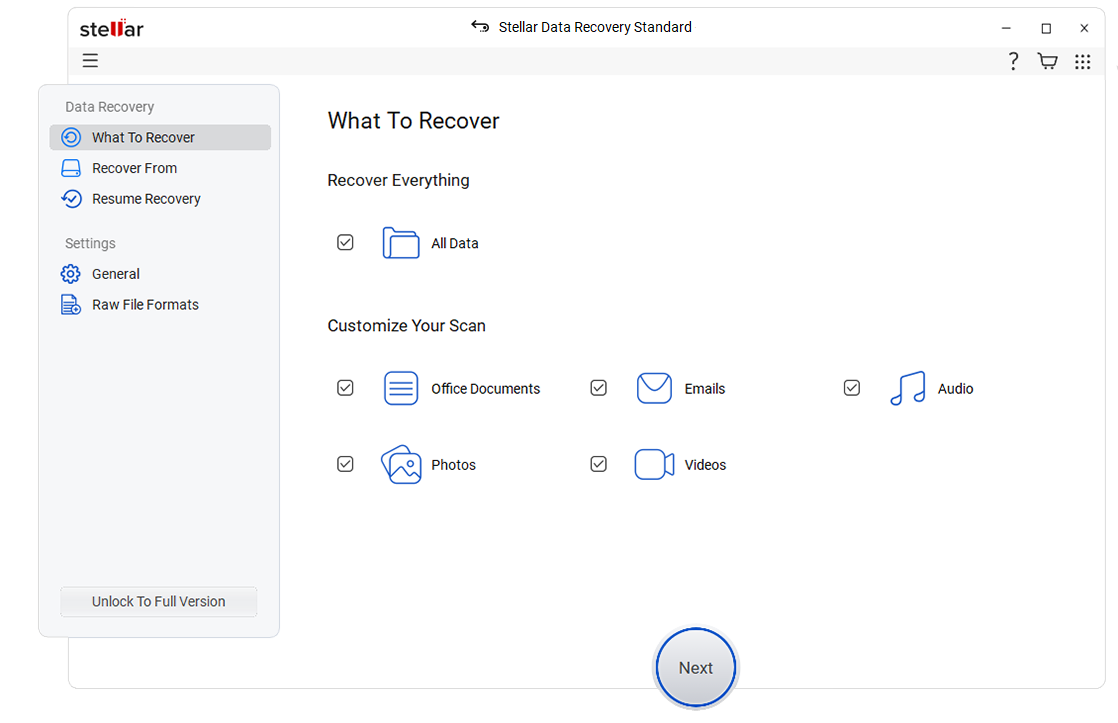
- Click Next. Select the USB drive from the Connected Drives list and then turn ON the Deep Scan toggle switch that appears at the bottom-left corner of the wizard.
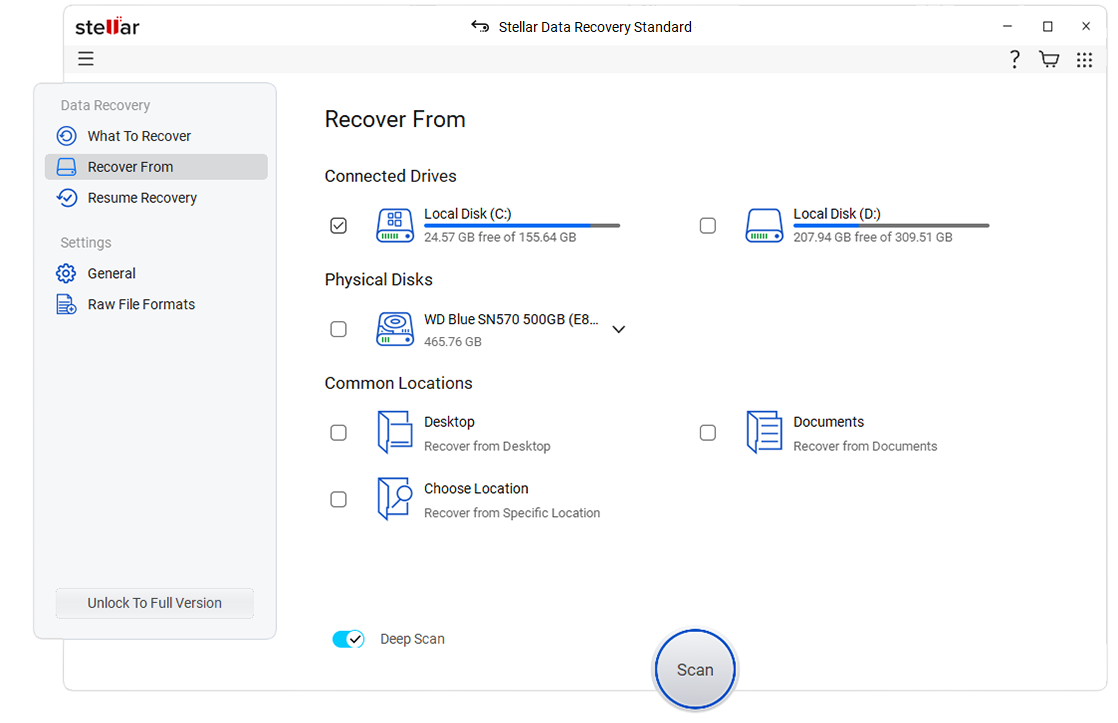
- Click Scan. Wait for few minutes to hours (depending on the disk size) until the data is scanned.
- After the scan, in the left tree-view pane, all recovered files and folders are listed. You can use the search box present at the top-right corner of the software window to find, preview, and recover specific files or folders. Alternatively, you can click on the ‘File Type’ tab to easily browse specific files via type and recover them.
- Click the checkboxes of the files and folders that you need to recover and then click the ‘Recover’ button. A pop up appears.
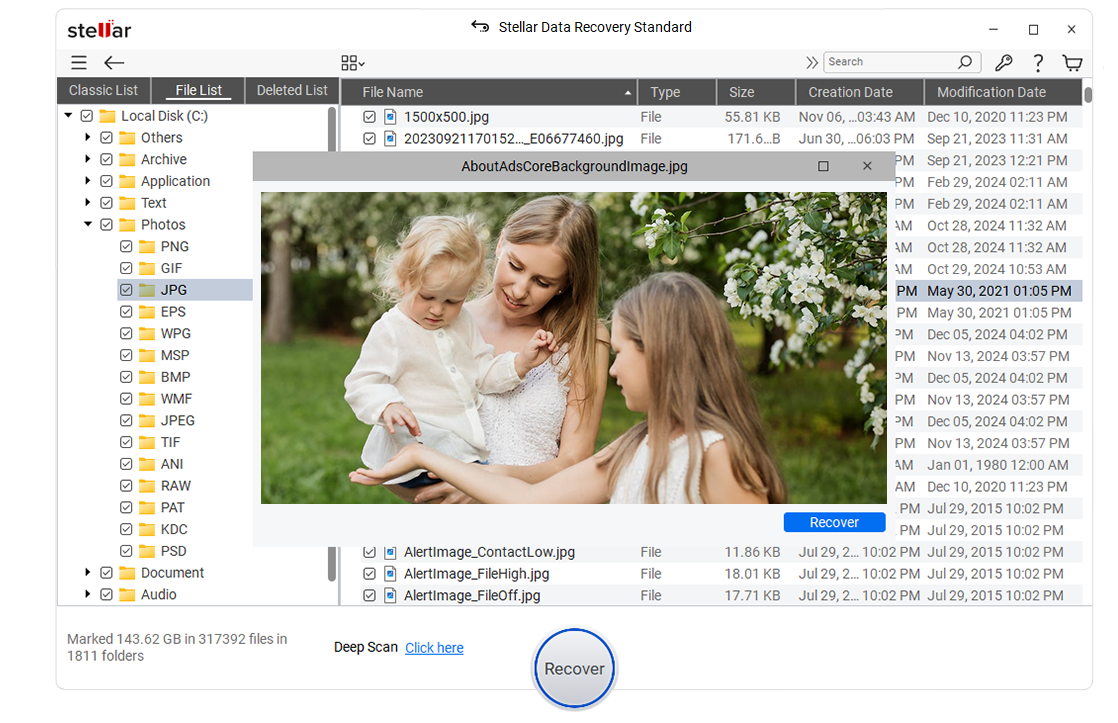
- Click the ‘Browse’ button to select the location where you want to save the recovered data. Make sure to select a different drive.
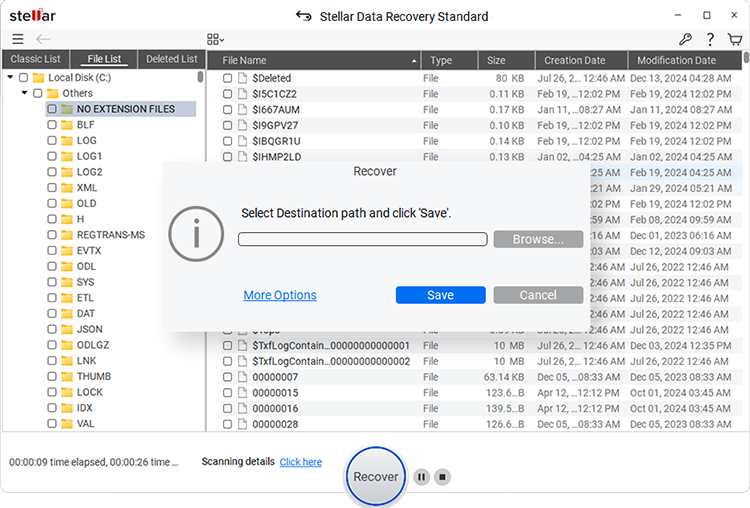
Wait for the process to complete. Again, it may take some time depending on the amount of data to be recovered. After recovery, format the USB drive to make it usable and move your recovered files to the formatted USB drive.
Conclusion
Use S.M.A.R.T. – drive monitoring system that comes embedded with all modern drives (HDDs, SSDs). The monitoring system helps you to keep an eye on the disk health and take appropriate measures before it fails or gets damaged to avoid data loss. Turn on automatic Windows updates. Always check and install the latest available Windows updates and drivers for your hardware. You can visit the support site of your hardware provider and download the latest drivers and tools to keep your system clean and free from any instability.
However, in a worst-case scenario, you can always trust Stellar Data Recovery- Standard tool and recover your precious data from not recognizing USB device or any other storage device with FAT (FAT16, FAT32), NTFS, or exFAT file system.
Was this article helpful?